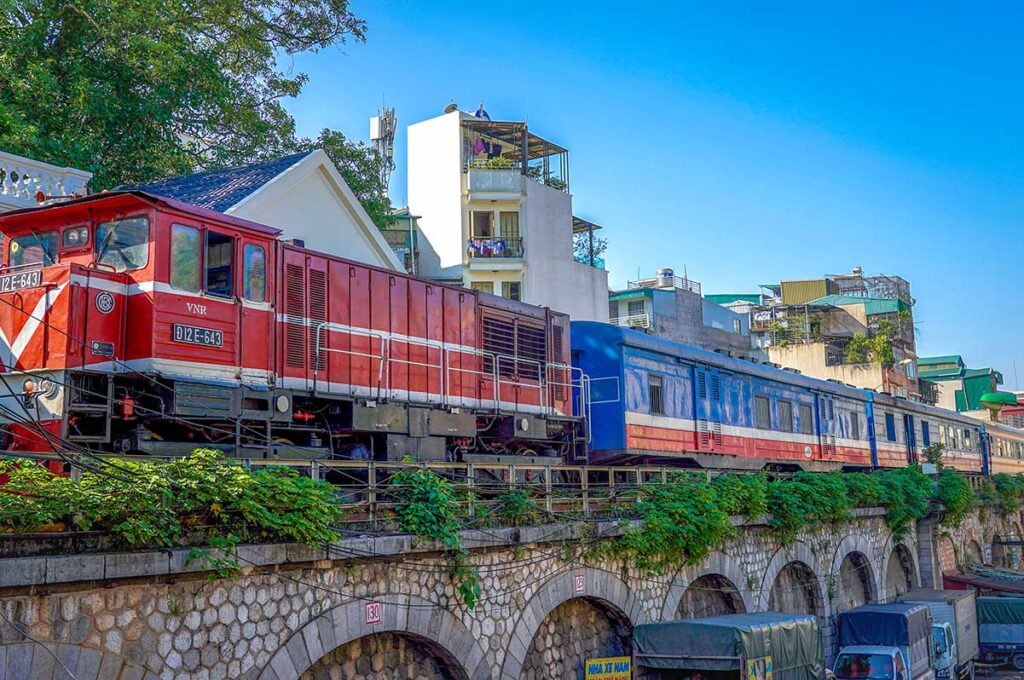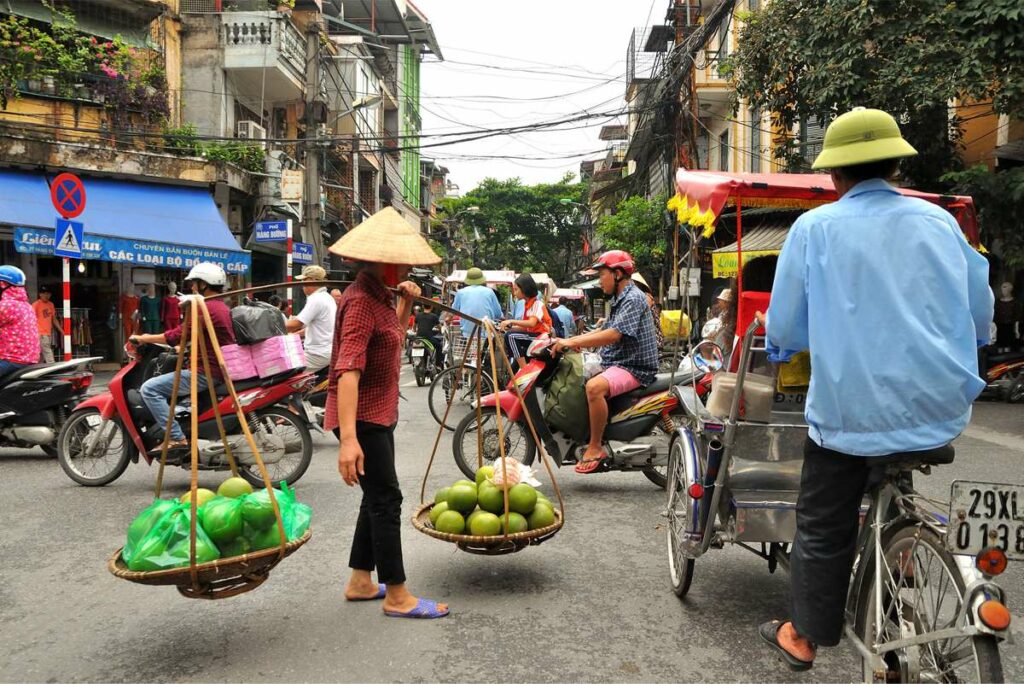What is Long Bien Railway Station?
Long Bien Railway Station is a small but historic train stop on the edge of Hanoi’s Old Quarter. Unlike the much larger Hanoi Railway Station, which serves as the country’s main hub for long-distance travel, Long Bien mainly connects Hanoi with destinations to the north and east, such as Hai Phong and Dong Dang near the Chinese border.
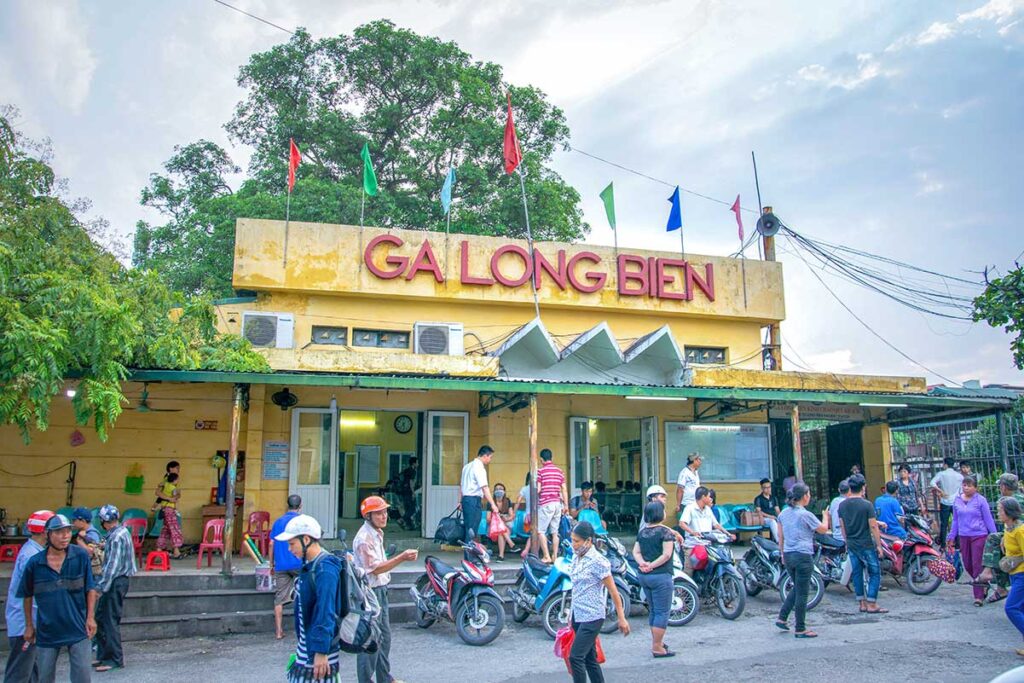
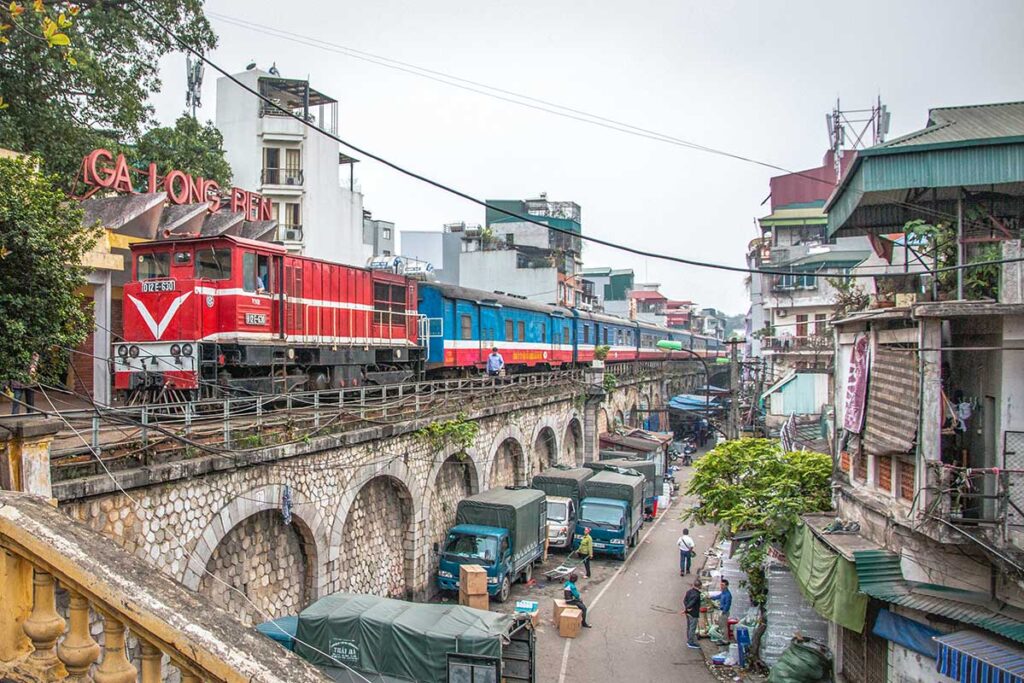
For travelers, this means it functions less as a grand landmark and more as a practical station with a bit of historic character. The building itself is modest, and most passengers you’ll see here are locals commuting rather than tourists heading south. Still, because of its location right beside the famous Long Bien Bridge, it has become a low-key attraction for those interested in Hanoi’s colonial architecture, train culture, and urban atmosphere.
History of Long Bien Railway Station
Long Bien Railway Station was built in 1902 during the French colonial period, at the same time as the construction of Long Bien Bridge. Together, the bridge and the station were part of Hanoi’s early rail network, designed to link the city with northern ports like Hai Phong and border towns such as Đồng Đăng. The French saw this infrastructure as essential for trade and military movement, which is why both projects were given such prominence.
Over the years, the station has played a secondary role to Hanoi Railway Station, which handles the main north–south line to Ho Chi Minh City. Long Bien’s importance has always been more regional, serving short and medium-distance journeys to the north and east rather than the long-distance routes across Vietnam.
During the wars of the 20th century, both the bridge and the railway line were frequent targets of bombings, given their strategic position across the Red River. The station itself has been rebuilt and repaired multiple times, which explains its simple and somewhat utilitarian look today compared to its original French design.
Long Bien Bridge connection
Long Bien Railway Station sits directly at the western end of Long Bien Bridge, so the two are inseparable. Trains leaving or arriving at the station immediately cross the bridge, making it one of the most atmospheric railway approaches in Hanoi.
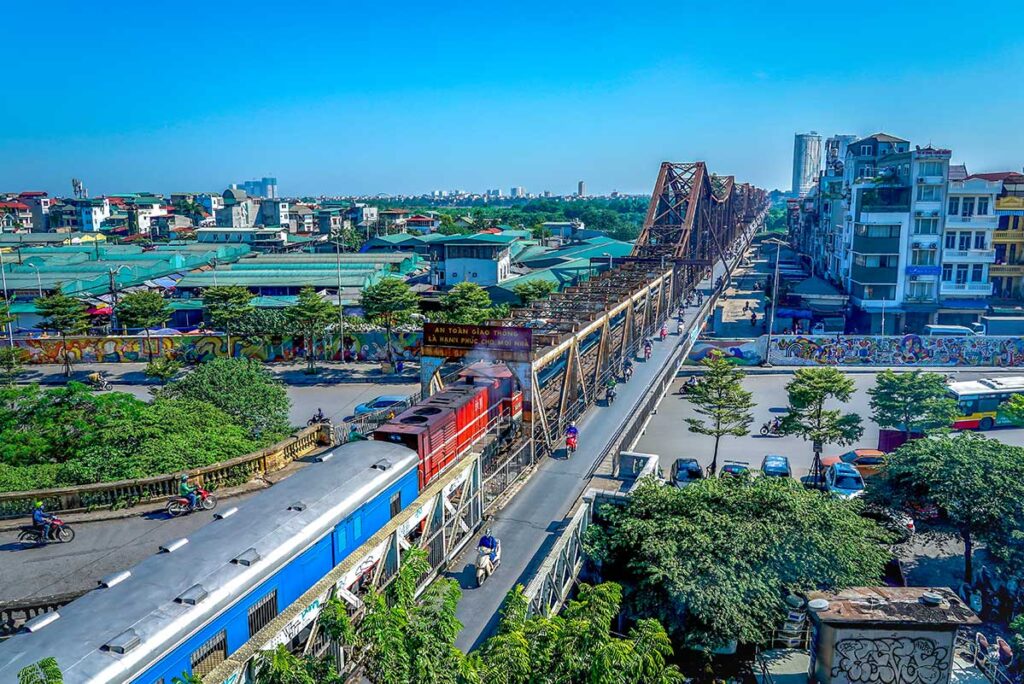
The bridge itself was completed in 1902 by the French and, at the time, was considered a masterpiece of colonial engineering. Spanning more than 1.6 kilometers across the Red River, it was the first steel bridge to connect Hanoi with the countryside and ports to the east. Much of the original structure still stands, though sections have been repaired after repeated bombings during the Vietnam War.
For today’s visitors, walking across Long Bien Bridge is as much an experience as seeing the station itself. Pedestrians and motorbikes share the narrow side lanes, while trains rumble across the central tracks. The best time for a stroll is early morning or late afternoon, when the sun casts warm light across the Red River and the surrounding farmland. It’s also one of the most unique photo spots in Hanoi, though the rusty railings and gaps in the pavement require a bit of caution.
If you’d like to explore the bridge in more detail, see our complete guide to Long Bien Bridge.
Scenic train cafes around the station
Around Long Bien Railway Station you’ll find a few cafés that have turned train watching into part of the experience. Some are right inside the station, while others sit on rooftops overlooking the tracks and the bridge. They’re not traditional neighborhood cafés like those along Hanoi’s Train Street, but they do provide safe and photogenic spots to enjoy a drink while watching the trains go by.
1. Hoa Xa Café
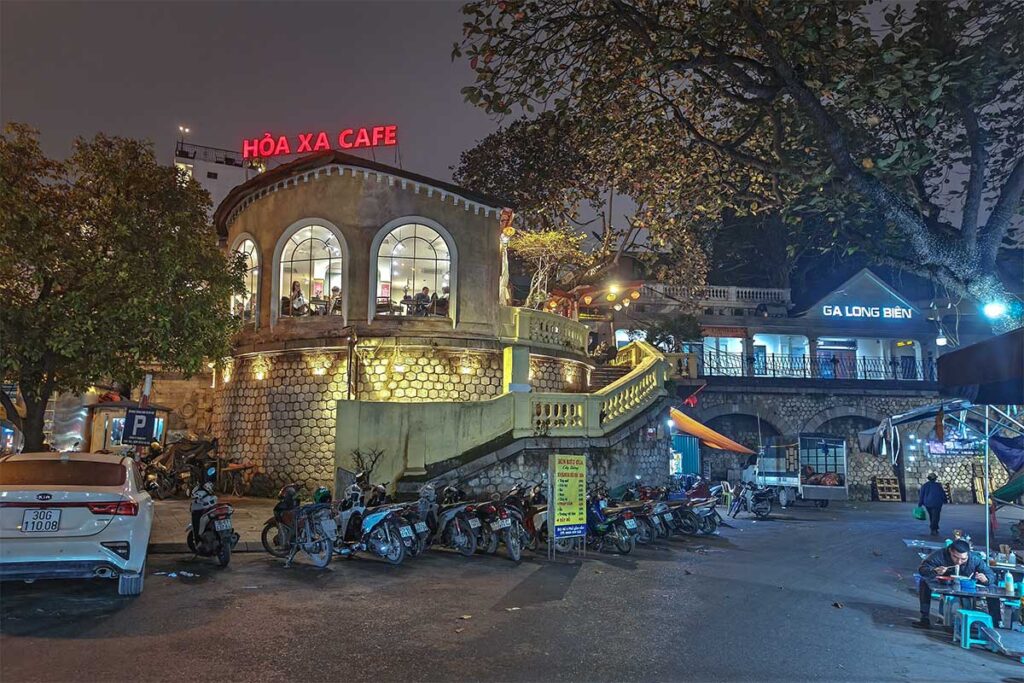
Located right inside Long Bien Railway Station, Hoa Xa Café feels like part waiting room, part French-style bistro. Its arched windows look directly onto the tracks, so you can sip coffee as trains roll in just a few meters away. Staff often help by sharing train schedules, making it easier to capture the perfect photo or video.
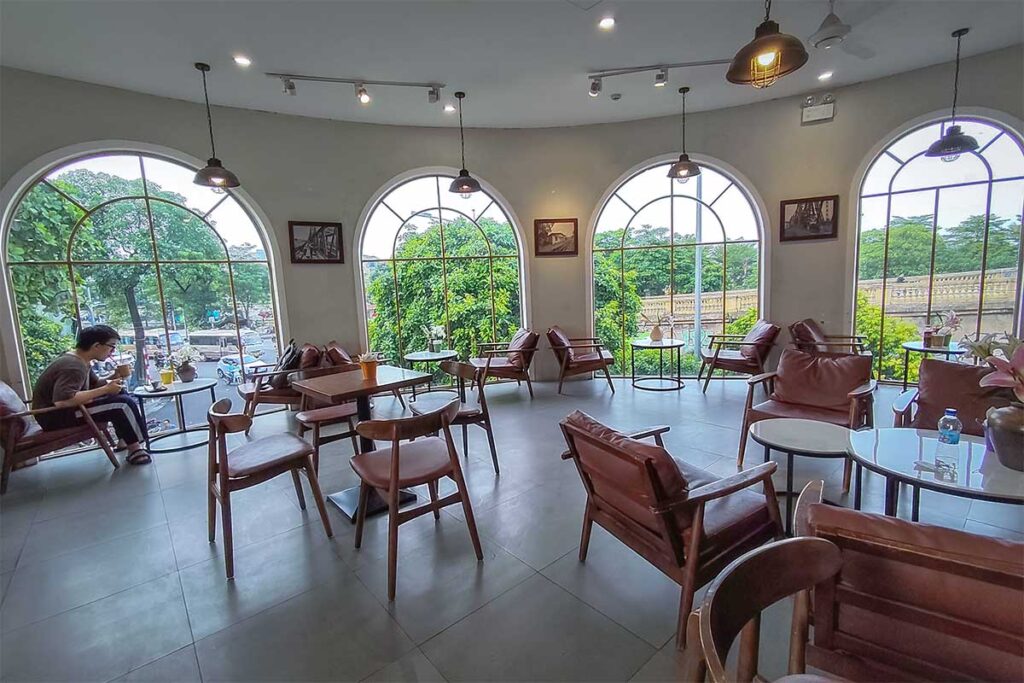
The café also sells souvenirs, which makes it feel a bit curated for visitors. Drinks are more expensive than at local cafés, and teas in particular are quite sweet, but the location and view are hard to beat.
2. Serein Café & Lounge
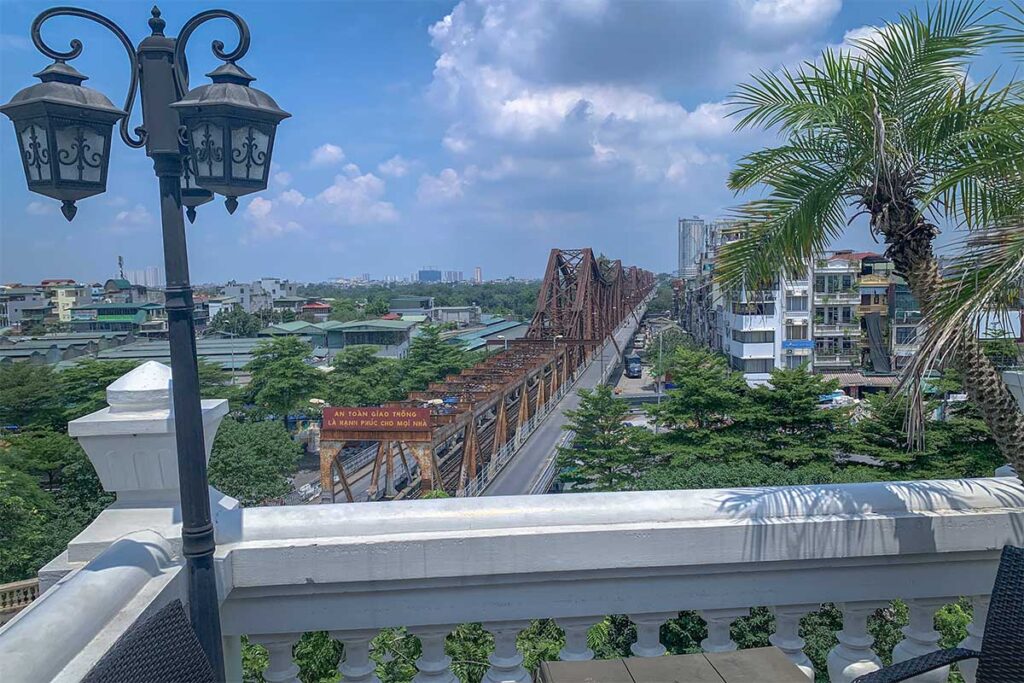
On the opposite side of the road from the station, Serein Café is known for its rooftop terraces and sweeping views of Long Bien Bridge. The spiral staircase leading up to the top level has become an Instagram favorite, and the atmosphere is undeniably photogenic. That said, the drinks and food are overpriced for what you get, and the quality is average at best. Most visitors come here for the view rather than the menu, so it’s best thought of as a spot to relax and take in the bridge rather than a place for serious coffee.
3. Bridge Coffe
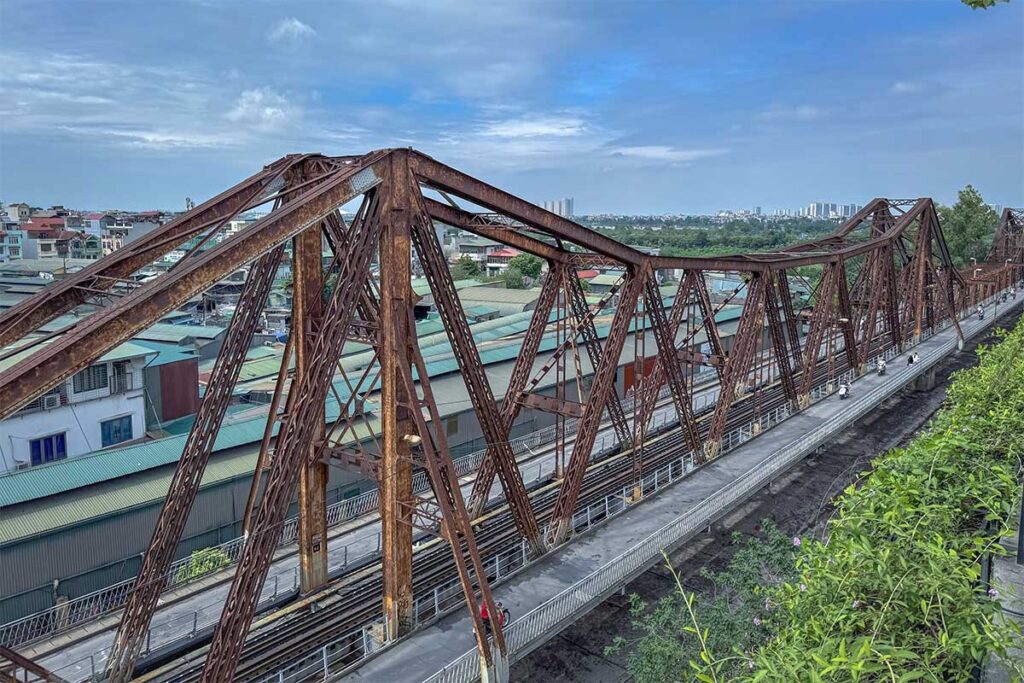
Just a short walk from the station, Bridge Coffe is a quieter option with rooftop seating overlooking the bridge and passing trains. It’s less polished than the other two cafés but has a more relaxed vibe and fairer prices. The egg coffee here gets good feedback, and the open-air top floor is especially nice at sunset. While it hasn’t yet gained the same fame, its combination of views, strong drinks, and a calm atmosphere make it something of a hidden gem near Long Bien.
Alternative to Hanoi Train Street?
Hanoi’s Train Street has become one of the city’s most talked-about attractions, with small neighborhood cafés lining the tracks as trains squeeze past just inches away. It’s atmospheric and unique, but also heavily commercialized, and the authorities have repeatedly declared it off-limits because of safety concerns. In practice, enforcement is inconsistent — sometimes the area is blocked by barriers and police, while at other times cafés operate as if nothing happened.
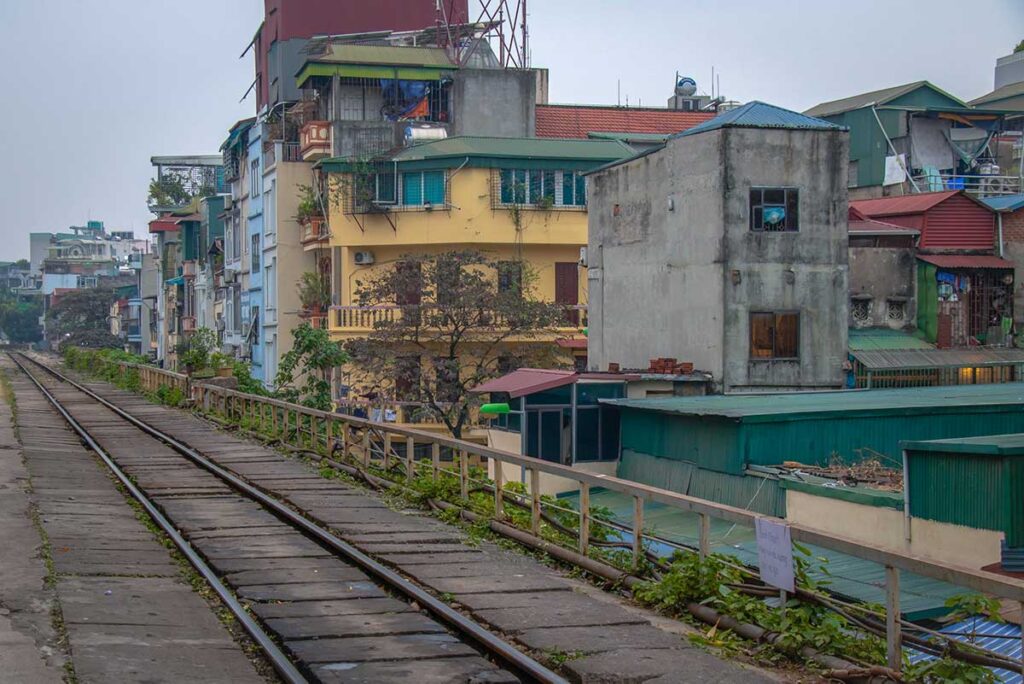
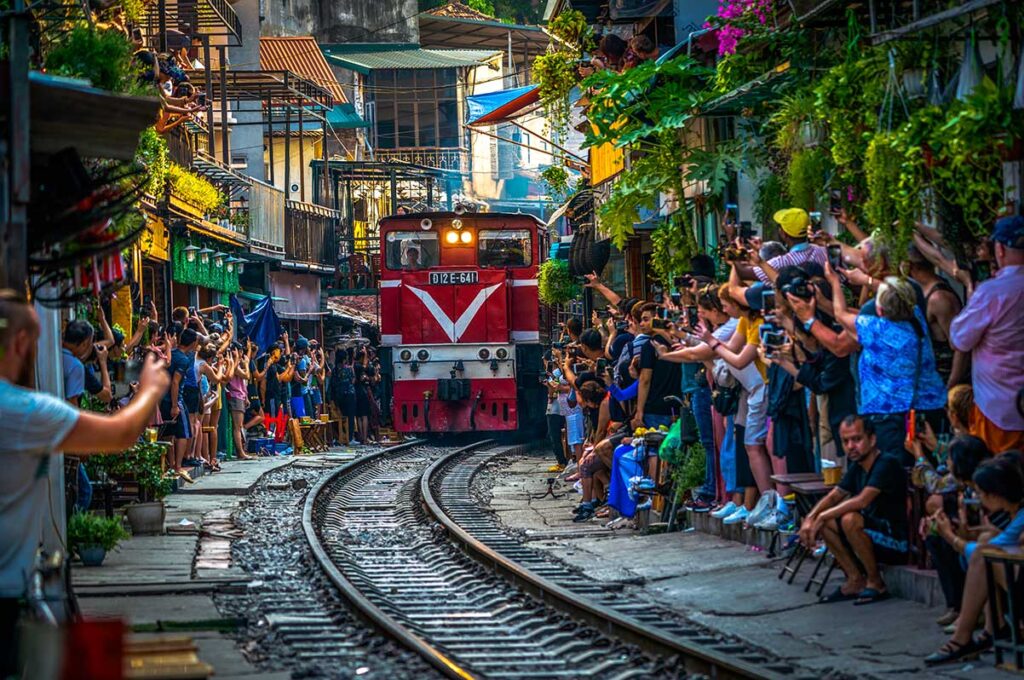
Long Bien Railway Station is sometimes mentioned as an alternative, but the experience is different. Here you don’t sit just outside someone’s front door, but instead watch trains arriving at a functioning station or crossing the steel spans of Long Bien Bridge. There are only a handful of cafés, and the atmosphere feels less staged — more urban and raw, but also less cozy.
The honest verdict: Long Bien is not a replacement for Train Street, but it can be a worthwhile spot if you want train photos or to see Hanoi’s rail system in action. If your main goal is the drama of a train rushing past within arm’s reach, Train Street is still the place for that. If you’d rather combine a safe coffee stop with views of the bridge and station, Long Bien is the better choice.
For more on the original, see our complete guide to Hanoi Train Street.
Taking the train at Long Bien Station
Long Bien is not just a photo stop — it’s an active working station. Trains from here mainly run to the north and east, including popular routes to Hai Phong (for Halong Bay access) and Đồng Đăng near the Chinese border. A few local services also pass through, making it a convenient option if you’re heading in those directions.
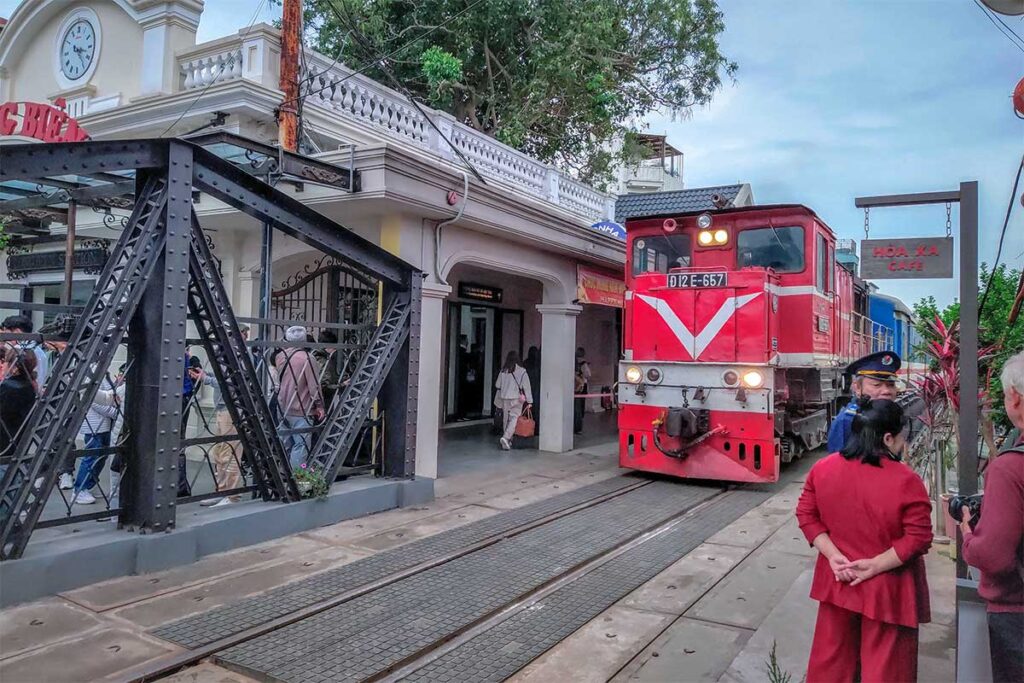
That said, it’s not the most practical station for most travelers. Many routes — including the popular overnight trains to Lao Cai (for Sapa) and all southbound trains — do not stop here. The building itself is small, facilities are very limited, and English-speaking staff are rare.
If you want a straightforward, tourist-friendly departure point with more routes, modern waiting areas, and ticket counters used to handling foreign travelers, Hanoi Railway Station is still the better choice.
See our complete guide to Hanoi Railway Station for details on routes, tickets, and practical tips.
Nearby sights
Because Long Bien Railway Station sits right on the northern edge of the Old Quarter, it’s easy to combine a quick stop here with other nearby places of interest. You don’t need to plan a separate trip just for the station — it works best as part of a wider walk through Hanoi’s historic center.
- Long Bien Market – A sprawling wholesale fruit and vegetable market tucked under the bridge. It’s at its liveliest in the early morning, when trucks unload produce from across northern Vietnam. Photographers often find it fascinating, but be prepared for narrow lanes and a bit of chaos.
- Dong Xuan Market – Just a few minutes’ walk from the station, this is Hanoi’s largest indoor market. It’s more structured than Long Bien Market, selling everything from clothing to household goods, and is a good place to browse if you’re already in the area.
- The Old Quarter – The station is only a few minutes’ walk from the northern streets of Hanoi’s Old Quarter. This makes it easy to combine with a stroll through the area’s bustling alleys, food stalls, and colonial shop houses.
